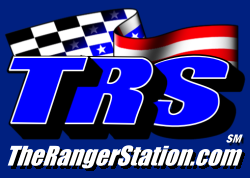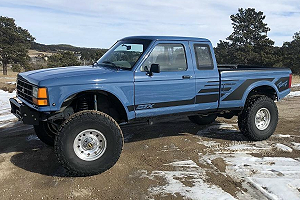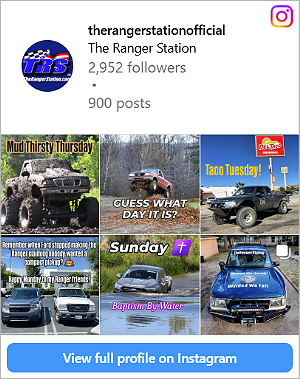compleckz
Well-Known Member
- Joined
- Aug 6, 2007
- Messages
- 1,328
- Reaction score
- 3
- Age
- 39
- Location
- Western Mass
- Vehicle Year
- 97
- Engine Size
- 4.0
- Transmission
- Automatic
NOTE: Originally posted by Piney Mar 17 2005
.........................--------------------------
Disclaimer: A solid axle swap is not a bolt-in operation. There is design and fabrication required, so experience with steering and suspension geometry is a must. Make sure you have a plan on how all aspects of the swap will be accomplished before you get yourself in too deep.
What axle?
Well that depends... do you want to put in a fullwidth axle, or one that has about the same width as the Ranger? Some of the axles listed below are already at ranger width, and others are easier to set up fullwidth. The axle must have the differential on the driver's side to match the front driveshaft drop on Ford transfer cases. Passenger side drops have been accomplished on Rangers, but only with custom transfer case setups and extensive exhaust modifications.
D30: I need help making this complete guys.
95 or later XJ (Jeep Cherokee)
-4 link suspension with tracbar
-Coils
-High pinion
-2-297 U-joints
?? - 94 TJ
-Low pinion
-5-260 U-joints
-Leaf sprung
ZJ (Grand Cherokee) have CV joints and likely are no stronger than SLA IFS parts.
D44:
71-77 Early Bronco (previous years had a D30)
-Low pinion
-Weaker U-joints (5-260)
-pre-76 had drum brakes, but can be converted to disks.
71-77 F100/F150
-Fullwidth
-High pinion
-73+ has stronger 5-297 u-joint
-76+ has disk brakes
78-79 Fullsize Bronco / F150
-Fullwidth
-High pinion
-78-79 is easier to narrow, but coil buckets must be spaced from frame to run fullwidth
-5-297 u-joints
76-79 F250
-Fullwidth
-Leaf sprung
-5-297 u-joints
-76-77 are low pinion, 78-79 are high pinion
-Heavy duty axletubes and knuckles
80-91 Jeep Grand Wagoneer
-Low pinion
-Leaf sprung
-Drive flanges
-83-85 had vacuum CAD
-5-297 u-joints
Here is a very extensive information source for all 44's. Mr. N
D60:
?????
Springs/Suspension:
Due to the low-hanging engine crossmember on TTB trucks, a minimum of about 6" lift height will be required to clear the differential pumpkin when the driverside tire stuffs. Some trimming of the engine crossmember is helpful as well.
Leafs (PMed rerard for more info) - On 98+ rangers the easiest route is to use leaf springs. Because these trucks have no coil buckets on the frame to begin with, leaf springs are an attractive method. A crossmember will need to be fabricated with spring hangers for the front, and shackles will need to be attached to the frame.
Coils - There's a good chance your axle will already be set up for coils and radius arms. This is the most popular setup because the factory Ranger coil buckets can be used. Radius arms and radius arm brackets should be taken from the donor truck. A tracbar is required to provide lateral control of the axle. An easy option is an adjustable tracbar for an Early Bronco, available from Wildhorses4x4 or Superlift. The best location for the tracbar bracket is on the outside of the frame, behind the steering box. This bracket is usually made from scratch and welded to the frame, however the factory tracbar bracket on a 78-79 fullsize Bronco can be used as a starting point. This bracket needs to be stout, and be well gusseted to the frame to prevent cracking. The radius arm brackets will interfere with the existing transmission crossmember, so a custom crossmember will need to be fabricated.
TTB coils are far too stiff for use with a solid axle. Early Bronco coils are a good choice, and there are several brands that are very soft. Generally, an EB coil in the factory Ranger bucket and using the factory lower spring perch from the donor axle will produce 2-3" more lift than the stated lift height for an EB (a 3.5" lift EB coil will produce about 6" lift on a SAS'd Ranger).
Steering:
On 98+ Rangers, the factory rack and pinion steering must be replaced with a traditional gearbox.
Generally you will not want to re-use the factory steering linkage from the donor truck. In most cases these will not provide optimal draglink angle and length on a Ranger. The tierod ends on these are also non-serviceable, and probably starting to wear out after 25+ years.
The most popular aftermarket steering setup is a custom assembly of 1-ton Chevy tierod ends and threaded DOM tubing. Because the 1-ton tierod ends have a larger stud diameter, the steering knuckles on the Dana 44 can be reamed from the top so that the tierod can be mounted on top of the steering arm, raising it several inches away from danger, and also reducing draglink angles. The Ranger pitman arm taper will also need to be enlarged to accept the larger tierod end.
Other setups include heim joints (rod ends) along with a variety of high-steer options. Here is a good writeup on using the Chevy TRE's and here is a writeup on various other setups.
Last edited:













